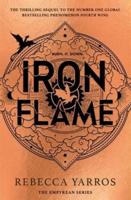Publisher's Synopsis
The Antiquary (1816) is a novel by Sir Walter Scott about several characters including an antiquary: an amateur historian, archaeologist and collector of items of dubious antiquity. Although he is the eponymous character, he is not necessarily the hero, as many of the characters around him undergo far more significant journeys or change. Instead, he provides a central figure (and location) for other more exciting characters and events - on which he provides a sardonic commentary. The book is written in the third person so the narrative does not remain with the antiquary. This is Scott's gothic novel, redolent with family secrets, stories of hidden treasure and hopeless love, with a mysterious, handsome, young man, benighted aristocracy and a night-time funeral procession to a ruined abbey. The romance and mystery is counterpoised by some of Scott's more down-to-earth characters, and grittily unromantic events. Scott wrote in an advertisement to the novel that his purpose in writing it, similar to that of his novels Waverley and Guy Mannering, was to document Scottish life and manners of a certain period, in this case the last decade of the 18th century. Scott included a glossary of Scottish terms as an appendix to the novel. At the opening of the story, Lovel meets Oldbuck while taking a coach from Edinburgh. Oldbuck, interested as he is in antiquities, has with him Gordon's Itinerarium, a book about Roman ruins. The book interests Lovel, to the surprise of Oldbuck and by their shared interest the two become friends. Oldbuck invites Lovel to come to Monkbarns and takes the opportunity of a willing listener to divulge his ancient knowledge. In the process of which, Oldbuck shows Lovel a plot of land he purchased at great cost where he found an inscription "A.D.L.L", which Oldbuck takes to mean "Agricola Dicavit Libens Lubens". Edie Ochiltree, the local beggar, disputes the antiquary's history, in one of the more amusing scenes of the story .Oldbuck decides to introduce Lovel to his good friend, Sir Arthur Wardour. When Sir Arthur arrives, Lovel meets Arthur's daughter, Isabella and the two realize they have seen each other before. Because Lovel is illegitimate, she knows her father would not approve of a marriage between them. When she sees Lovel standing in the road waiting to talk to her, she convinces her father to take the long way home, walking down to the beach. Luckily, Edie Ochiltree, having the insight that someone may be trapped on the beach not knowing that the tide was coming in, finds the Wardours and helps them escape the rising waters. Then, Lovel appears and gets them to relative safety, huddling on the side of a rocky cliff. Finally, Oldbuck arrives with men and ropes to pull the four up over the cliff to safety.A while later, Oldbuck takes Lovel, the Wardours, his niece and nephew, Douster-swivel and a priest to the ancient ruins of Saint Ruth on Sir Arthur's property. While exploring the property, they discuss an ancient treasure that they believe to be buried at the ruins. Captain M'Intyre dominates Isabella's attention, which she leaves in favor of Lovel's to the dismay of M'Intyre. M'Intyre, angered at this slight, discovers that Lovel is in the military, but realizes he knows of no one named Lovel in his division and calls him out upon the topic. They agree to a duel and return to the scene to fight for their individual honor.... Sir Walter Scott, 1st Baronet, FRSE (15 August 1771 - 21 September 1832) was a Scottish historical novelist, playwright and poet with many contemporary readers in Europe, Australia, and North America.... Cavenagh, F. A. (Francis Alexander) 1884-1946...









